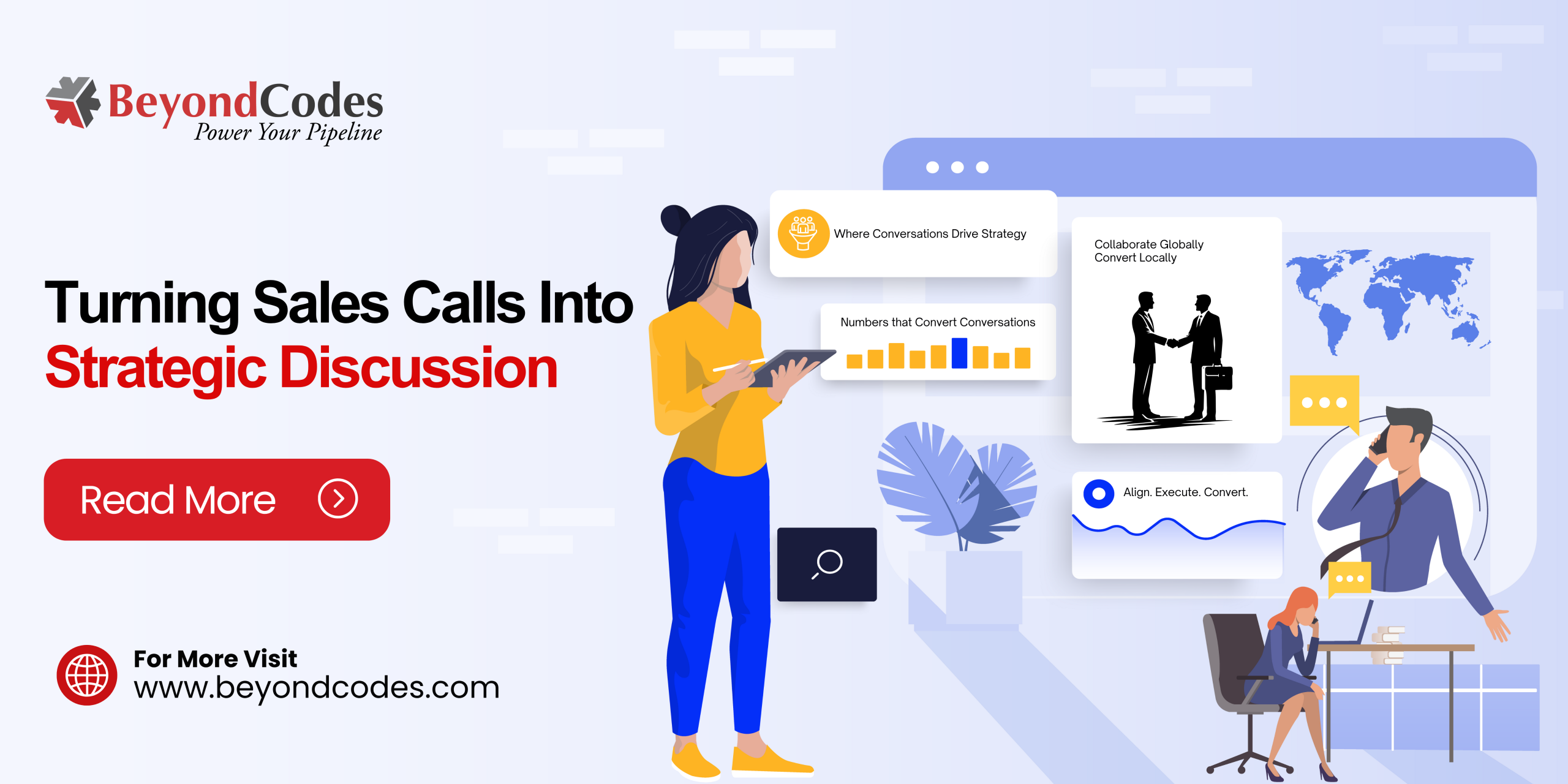Generating B2B sales leads and purchasing has become too complicated. You need to make it easy for your customers to buy.
B2B sales face a challenging situation as the industry stands at a pivotal moment. Conventional sales techniques are proving ineffective, with Gartner’s research revealing that a mere 5% of the buyer’s journey involves interaction with a sales representative for generating B2B Sales Leads.
Additionally, HubSpot reports a 30% decline in email response rates.
In July 2022, nearly 68% of organizations fell short of their sales targets, according to Pavilion’s findings.
Sales leaders are struggling to identify how to turn around their declining sales, largely because B2B sales organizations are not selling the way today’s buying committees want to buy. This is creating a growing gap between buyers and sellers.
Gone are the days of the traditional, linear sales process. Purchase decisions now follow a more fluid process, with buyers preferring to do most of their research on their own.
At the same time, the rise of larger buying committees, the higher stakes for customer retention, and the increased turnover of decision-makers due to the Great Reshuffle are creating a ripple effect for sales teams, leading to longer sales cycles, lower win rates, weaker pipelines, and frustrated sellers and buyers.
Although numerous sales organizations have attempted to narrow this divide to generate B2B Sales Leads by enhancing their technological resources, adding more technology has unintentionally hindered performance and wasted valuable time for sales professionals.
Forrester’s research indicates that only 53% of sales representatives believe their technology stack genuinely enhances their productivity and contributes to improved outcomes.
In their pursuit of providing more tools, leaders have failed to tackle the fundamental issue, a data-related challenge.
Sellers continue to grapple with issues such as excessive dependence on outdated data, imprecise indicators of buyer intent, and insufficient coverage of potential prospects to generate B2B Sales Leads.
Also Read: From Silos to Synergy: Combining B2B Demand Generation, Lead Generation, and ABM for Maximum Impact
1. The Solution: Equipping Teams with “Deep Sales”
In a world that appears increasingly complex, the remedy may seem equally complex, but, in reality, the solution takes an unexpected turn. Surprisingly, according to LinkedIn data, top-performing salespeople spend 10% less of their time on selling compared to the average performer.
So, what’s their secret?
These high achievers excel in strategically managing their time and have a knack for uncovering pertinent information. They invest a significant portion of their time researching and comprehending their prospects, mapping out crucial relationships, and seizing the most opportune moments for personalized outreach.
It’s entirely feasible for all sales professionals to emulate these top-performing practices to generate B2B Sales Leads, but leaders must first establish a foundation of accurate data and real-time insights derived from predictive signals. Empowered with this vital information, salespeople can allocate their time to accounts and leads with the highest likelihood of conversion.
This innovative approach, known as “deep sales,” aims to bridge the gap between buyers and sellers by arming sales teams with the precise intelligence required to concentrate on high-probability accounts, approach buyers with well-received and relevant outreach, enhance results, and alter the trajectory of performance.
2. The Significance of Deep Sales
Certain sales leaders who are currently achieving success might not recognize the urgency to generate more B2B sales leads. They’ve achieved satisfactory outcomes by either expanding their tech tools or increasing their outreach efforts.
However, influential thinkers at Gartner, Forrester, and McKinsey have emphasized the importance of reevaluating the existing approach.
While engaging with prospects, sales professionals may have a grasp on the “who” and the “what,” but they could potentially overlook the “when,” “why,” and “how.” It’s precisely in these aspects that deep sales offer substantial opportunities for B2B sales teams.
Deep-sales technology represents a formidable tool for sellers, leveraging data to generate predictions and suggestions on a scale beyond human capability. It automates many of the practices that distinguish top-performing individuals, laying the essential groundwork for all sellers to embrace a fresh perspective. Deep sales deliver practical insights and recommendations across a seller’s portfolio in three key areas:
- Account insights: Focusing on accounts with the greatest potential for success.
- Relationship intelligence: Identifying decision-makers and determining the optimal approach to connect with them.
- Buyer intent: Seizing the opportune moments for outreach, guided by signals like organizational growth, job transitions, and shifts in strategy.
With an unparalleled capacity to harness data and insights for driving results, the deep-sales approach offers a means for sales leaders and their teams to unlock a plethora of new opportunities. It represents a path leading to expedited deal cycles, enhanced win rates, and revenue expansion—a transformative shift in the evolution of B2B sales.
This juncture holds significant importance for B2B sales leaders. It’s imperative to recognize that the world has undergone a profound transformation, necessitating a departure from traditional sales methods. Relying on convoluted and ineffective technology stacks to address these challenges only serves to erode brand equity and yield suboptimal results.
To truly grasp the context of prospects and leverage profound insights for improved effectiveness, it’s crucial to learn from the practices of highly successful sales professionals. The time has come for all executives and leaders to embrace deep-sales strategies and technology, benefiting our organizations and our valued customers.
3. Amidst Economic Challenges, Opportunities Arise
Even in the face of economic uncertainty, opportunities remain for businesses and sales professionals alike. For companies with strong financial footing, the current climate presents a chance to expand market share and acquire top talent from struggling competitors.
Conversely, for those facing financial difficulties, this period offers an opportunity to implement tough yet necessary decisions, such as selective downsizing and portfolio optimization. It’s also an opportune time to eliminate unnecessary expenses and bureaucratic bloat.
Google, for instance, has discontinued the development of its Pixelbook laptop, reduced funding for its internal incubator, Area 120, and shuttered its digital gaming service, Stadia. Amidst these cuts, retaining key customers and top sales personnel remains paramount.
Furthermore, opportunities vary depending on a seller’s existing relationship with a customer, ranging from established incumbency to no prior connection. In an environment of heightened uncertainty, buyers tend to become risk-averse.
If a customer’s needs are being met by their current supplier, they may perceive any change as risky, potentially worsening the situation with a new provider. Therefore, incumbents enjoy an inherent advantage. Additionally, incumbents have direct access to their customers.
By dedicating more time to customer interactions, particularly in service-oriented industries, sellers can uncover new opportunities. (Conversely, if a current supplier fails to meet customer expectations, buyers will swiftly switch to a promising alternative offering significantly lower costs.)
Sellers who thrive will share a common trait – a robust digital infrastructure that enables them to tailor customer engagement to each unique situation. Data-driven hybrid sales strategies, a strategic blend of digital, virtual, and in-person customer interactions, are crucial for sustained success.
To achieve efficiency and cost savings in certain areas, sellers can increase their reliance on digital channels and automate simpler sales tasks.
To enhance effectiveness and impact in other areas, face-to-face selling requires a renewed focus. In both scenarios, leveraging analytics can drive smarter resource allocation.
4. B2B Sellers Need a Strategic and Tailored Approach
B2B sales professionals must adopt a more proactive and customized approach to succeed.
When B2B seller offerings stand out from the competition, and customers are well-positioned to thrive in a slowing economy (for instance, banks often benefit from rising interest rates), the strategy is to double down and seek growth opportunities.
Sellers can expand their reach and gain market share by aggressively pursuing new opportunities and customers while driving innovation in products and services.
We anticipate that Google will expand its customer-facing teams in its focus areas (cloud, search, and YouTube) while scaling back other businesses and reducing non-customer-facing positions. With the cloud business booming, the decision to continue investing heavily in this area is evident. Search is an excellent example of a business requiring a more nuanced approach.
Search advertising revenues have experienced a significant slowdown in areas such as insurance, loans, and mortgages. While reducing ad sales efforts in these segments, we expect Google to increase investment in high-growth sectors. Scaling back across the board would be a counterproductive strategy.
On the other hand, even if seller offerings are differentiated, customers facing declining business operations will inevitably be focused on doing more with less.
Sellers must engage in proactive conversations with customers about maximizing value to help them weather the storm. By actively listening to and understanding customer needs, sellers can redefine their offerings to align with the customer’s revised value proposition.
They might offer shorter-term contracts, leaner versions of the solution, or favorable payment terms. Sellers can also help customers anticipate future challenges and prepare accordingly.
When a seller’s offerings are in a weak competitive position, regardless of whether customers are affected by an economic slowdown, the best approach is to focus on select relationships, activities, and sources of value.
Strong seller-buyer relationships foster trust, a significant source of customer value. Sellers can emphasize their ability to deliver reliably and consistently.
5. Use Data and Analytics To Build a Growth Engine
Data-driven B2B leaders have harnessed the power of data and analytics to create a growth engine that transforms their organizations from mere insight generators to impact drivers. Their success stems from excelling in seven key areas:
a) Identifying the Value: They uncover clusters of opportunities where data and analytics can make a significant impact, such as whitespace acquisition, pricing optimization, or seller effectiveness enhancement. A multinational chemicals company, for instance, is implementing growth analytics to expand market coverage and tailor its commercial approach to specific markets using use cases like in-season demand forecasting and churn prediction. The total opportunity is estimated to be worth €1 billion.
b) Pinpointing the Opportunity: By combining internal and external data, they develop algorithms to pinpoint concrete growth opportunities. During the COVID-19 pandemic, a global telecommunications company created a demand simulator to determine where and how to adapt sourcing and inventory management in case of lockdowns. This tool helped the company avoid stockouts and improve overall resilience.
c) Planning the Campaign: They establish a centralized “value cockpit” and adopt a campaign mindset to systematically prioritize and pursue growth opportunities.
d) Activating the Omnichannel Journey: Recognizing the doubling of channels used by B2B buyers in the past five years, they align opportunities with the right channels and offers to drive conversion.
e) Empowering the Seller: They equip their frontline staff with relevant insights, capability building, and incentives across opportunities and campaigns. A global paint and coatings manufacturer, for example, rolled out growth analytics to more than 2,000 sellers to optimize pricing, leading to an EBIT increase of over 10%.
f) Managing Performance: They measure performance and incorporate frontline lessons learned into insights generation to continuously improve value delivery.
g) Building Foundations: They tech-enable the entire system and assemble a cutting-edge analytics team and commercial organization to operate the growth engine.
While each of these levers is powerful on its own, expert users combine them to maximize impact.
FAQs
1) How To Develop a B2B Sales Strategy?
Large companies (especially in the B2B SaaS IT sector) are conducting layoffs and cutting costs. For sales teams selling to clients in cost-cutting mode, this requires new tactics.
B2B sellers must recognize that a slow economy creates different kinds of opportunities: buyers’ time horizons become shorter, their willingness to take the risk of working with a new vendor goes down, and their focus on core, profitable business units go up (making it harder to sell to experimental or peripheral businesses within a larger company).
The B2B Sales team needs to avoid a spread-the-peanut-butter approach and instead concentrate resources on the most promising opportunities.
2) How To Generate B2B Business Leads Through Social Media?
Social media’s potential extends beyond mere interactions with existing acquaintances. It serves as a powerful tool to connect with potential customers unfamiliar with your business. With nearly 5 billion social media users worldwide, engagement levels are remarkably high, making it an ideal platform for marketing virtually any business.
Harnessing social media platforms to capture qualified leads or prospective customers is known as social media lead generation. One of its key advantages is its accessibility and quantifiability.
Here are five effective strategies for generating leads on social media:
– Use Social Proof in Your Posts
– Use Lead Magnets
– Use Targeted Ads
– Webinar Hosting
– Add a Human Touch
3) How To Generate B2B Marketing-Qualified Leads (MQLs)
To boost Marketing Qualified Leads (MQLs), companies should concentrate on recognizing established MQL criteria, dividing leads into segments, developing tailored content for various stages, providing value, establishing omnichannel touchpoints, and incorporating a distinct call to action (CTA).
4) How To Generate Online Leads for a B2B Business?
If you were tasked with making a sale today, where would you initiate the process?
The multitude of online marketing strategies for lead generation can be daunting. Should you acquire an email list and launch a campaign? Is it advisable to establish a Google AdWords account and initiate advertising for pertinent search terms? Or should you send direct messages to every connection you never realized you had on LinkedIn?
Lead generation tends to perplex marketers. Whom can you rely on? How should it be done? What kind of returns can you anticipate? By addressing these queries, you can begin pinpointing the most effective B2B lead generation tactics for your business.
Few Hand Picked Articles For You
- B2B Lead Nurturing: The Ultimate Guide to Expand Your Business
- Crucial Tips To Fill Your Sales Pipeline With B2B Leads
- 30 Transferable Skills for Sales Development Reps
- Effective Steps to B2B Appointment Setting
- Outbound Lead Generation Strategies
- What is B2B Lead Generation? The Ultimate Guide







